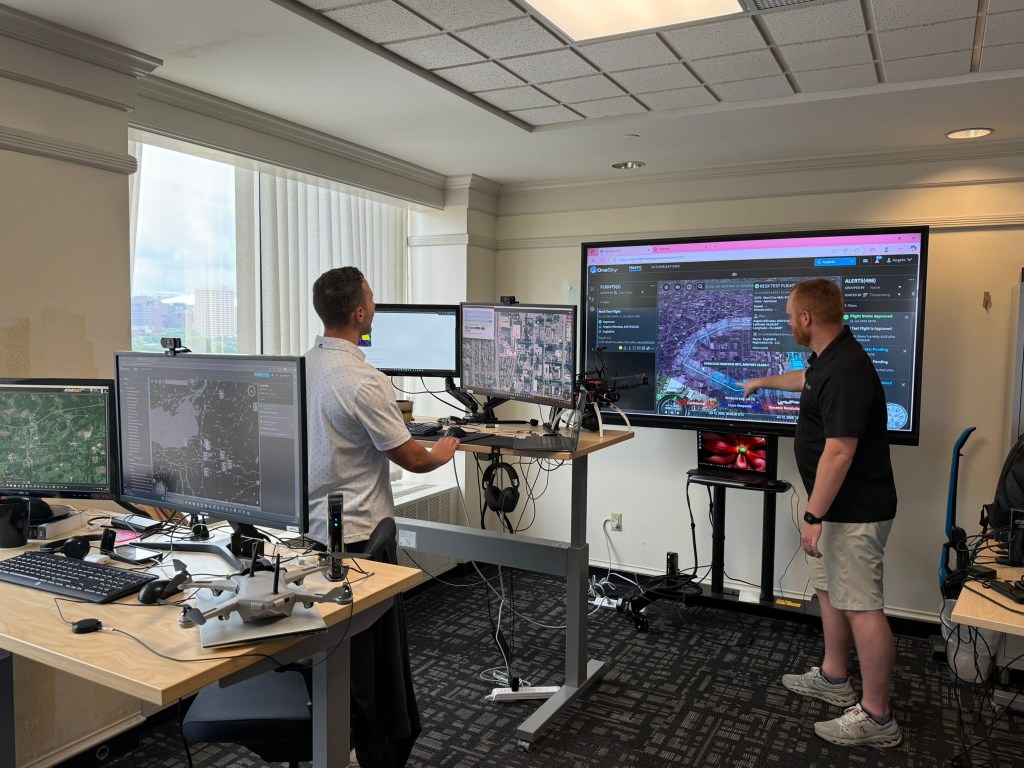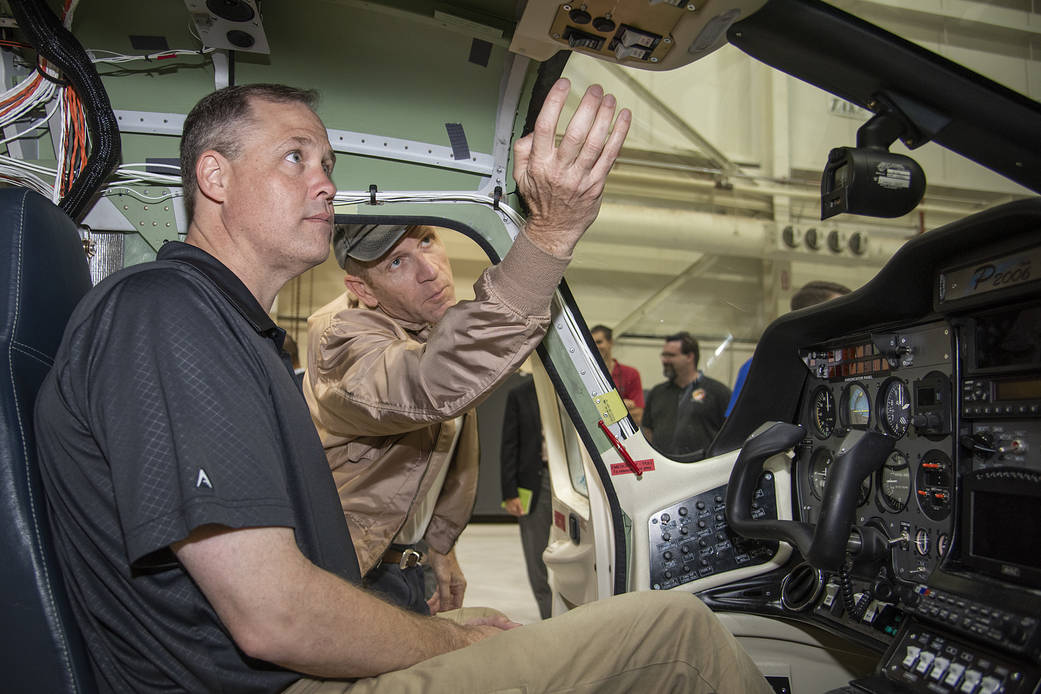AFRC2019-0250-27
NASA Administrator Jim Bridenstine got a firsthand look at the agency’s all-electric X-57 Maxwell in its first of three configurations as an electric aircraft, following the vehicle’s Oct. 2 delivery to NASA’s Armstrong Flight Research Center in Edwards, California.
Administrator Bridenstine and Deputy Administrator James Morhard were briefed by project managers, pilots, engineers, and NASA Armstrong center leadership as he inspected the aircraft in its current configuration called Modification II, or Mod II, which features the replacement of traditional combustion engines with electric motors. The administrator received updates as the team prepares the vehicle for Mod II ground systems testing, to be followed by ground taxi tests, and ultimately flight tests.
While Mod II proceeds toward testing, NASA is preparing for the project’s following Mod III phase, which will feature a new high-aspect ratio wing and repositioning of the electric motors to the wing tips, and Mod IV, the aircraft’s final configuration, which will feature the addition of 12 small, electric motors along the leading edge of the wing.
X-57 is NASA’s first all-electric experimental aircraft, or X-plane, which will feature a distributed electric propulsion system. The goal of the project is to help develop certification standards for electric aircraft, and to share the aircraft’s design and airworthiness process with regulators. The project includes a design driver technical challenge, including a 500% increase in high-speed cruise efficiency, zero in-flight carbon emissions, and flight that is quieter for communities on the ground.
October 11, 2019





















-Carolyn_Y._Ng.jpeg?w=1024)



